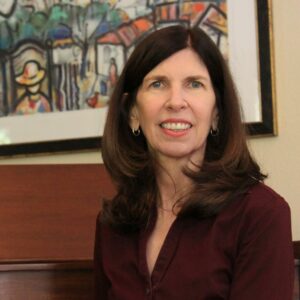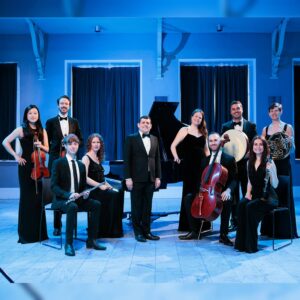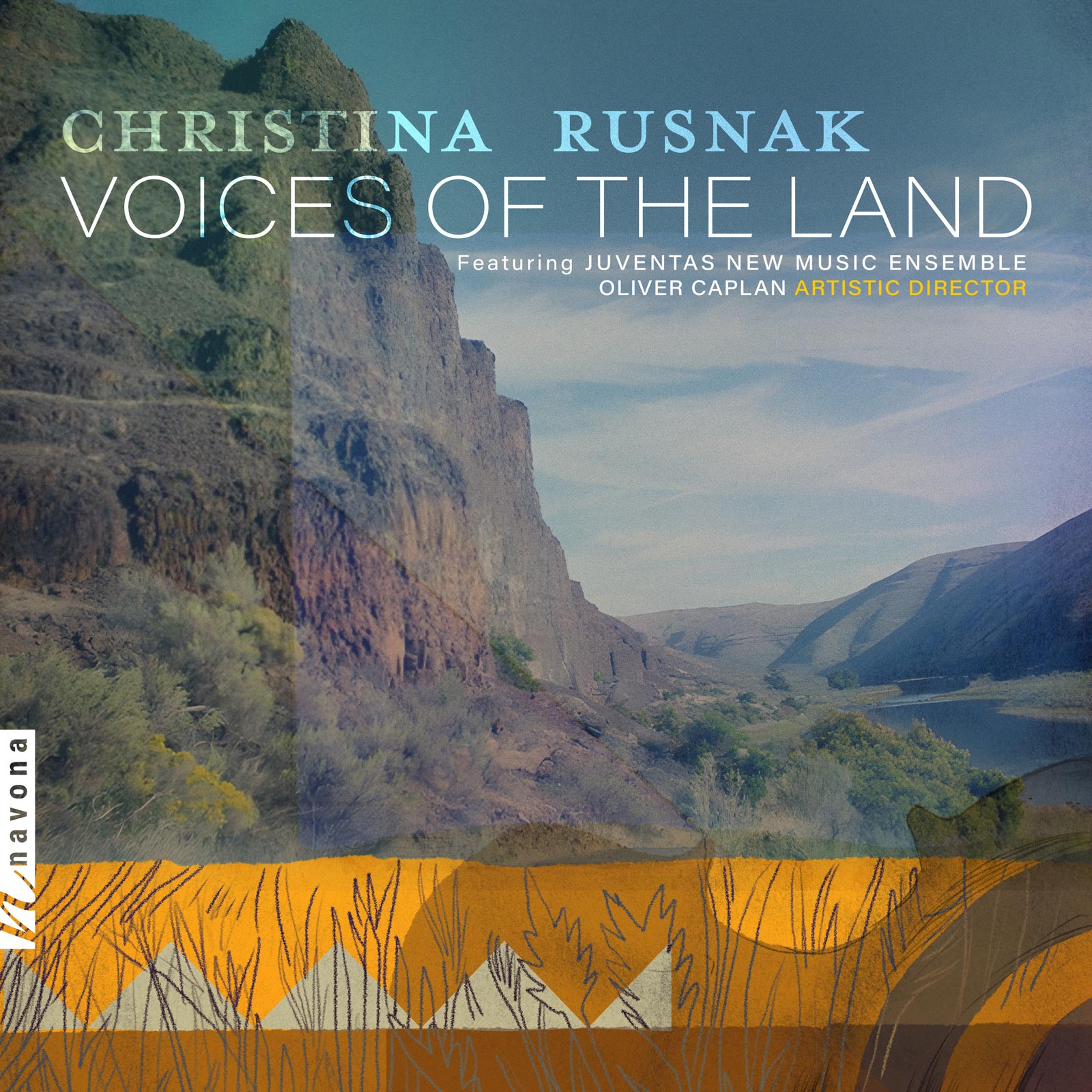Voices of the Land
Christina Rusnak composer
Juventas New Music Ensemble
Oliver Caplan artistic director
VOICES OF THE LAND from composer Christina Rusnak guides listeners on a journey through America, celebrating its landscape and its people. Featuring the Juventas New Music Ensemble, the pieces on this album explore the emotions and experiences of settlers, miners, and indigenous people as they navigated the challenges, triumphs, and indignities of early American history. Drawing inspiration from the Homestead Act and the Klondike Gold Rush to the John Day River and Pine Meadow Ranch, Rusnak’s music weaves together the rhythms and sounds of nature with the stories of the nation’s early inhabitants. This album is in keeping with Rusnak’s other work as a composer, focusing on the intersection of place, nature, culture, history, and art. A powerful tribute to the land and the people who shaped it, VOICES OF THE LAND invites listeners to reflect on the complex history of America.
Listen
Stream/Buy
Choose your platform
Track Listing & Credits
| # | Title | Composer | Performer | |
|---|---|---|---|---|
| 01 | Coal Creek | Christina Rusnak | Juventas New Music Ensemble | Oliver Caplan, artistic director; Celine Ferro, bass clarinet; Ryan Shannon, violin; Mina Lavcheva, violin; Jonathan Hess, marimba | 7:02 |
| 02 | FREE LAND: I. Homeland | Christina Rusnak | Juventas New Music Ensemble | Oliver Caplan, artistic director; Sho Kato, flute; Robinson Pyle, trumpet; Ryan Shannon, violin and vocals; Thomas Barth, cello; Thomas Schmidt, marimba and percussion; Jonathan Hess, percussion | 5:02 |
| 03 | FREE LAND: II. Two Seasons | Christina Rusnak | Juventas New Music Ensemble | Oliver Caplan, artistic director; Sho Kato, flute; Robinson Pyle, trumpet; Ryan Shannon, violin and vocals; Thomas Barth, cello; Thomas Schmidt, marimba and percussion; Jonathan Hess, percussion | 6:06 |
| 04 | FREE LAND: III. Harvest | Christina Rusnak | Juventas New Music Ensemble | Oliver Caplan, artistic director; Sho Kato, flute; Robinson Pyle, trumpet; Ryan Shannon, violin and vocals; Thomas Barth, cello; Thomas Schmidt, marimba and percussion; Jonathan Hess, percussion | 3:54 |
| 05 | The Way Through | Christina Rusnak | Juventas New Music Ensemble | Oliver Caplan, artistic director; Celine Ferro, clarinet; Ryan Shannon, violin; Thomas Barth, cello; Tom Schmidt, marimba | 9:04 |
| 06 | Canyon Voices | Christina Rusnak | Juventas New Music Ensemble | Oliver Caplan, artistic director; Sho Kato, flute; Celine Ferro, clarinet; Ryan Shannon, violin; Thomas Barth, cello; Tom Schmidt, percussion; Jonathan Hess, marimba and percussion | 7:25 |
| 07 | Oregon Trail: I. Me-a pa-te | Christina Rusnak | Juventas New Music Ensemble | Oliver Caplan, artistic director; Sho Kato, flute; Celine Ferro, clarinet; Ryan Shannon, violin; Thomas Barth, cello; Tom Schmidt, percussion | 6:11 |
| 08 | Oregon Trail: II. Mudza | Christina Rusnak | Juventas New Music Ensemble | Oliver Caplan, artistic director; Sho Kato, flute; Celine Ferro, clarinet; Ryan Shannon, violin; Thomas Barth, cello; Tom Schmidt, percussion | 6:34 |
| 09 | Oregon Trail: III. Hyas Tyee Təmwata | Christina Rusnak | Juventas New Music Ensemble | Oliver Caplan, artistic director; Sho Kato, flute; Celine Ferro, clarinet; Ryan Shannon, violin; Thomas Barth, cello; Tom Schmidt, percussion | 7:09 |
| 10 | Pine Meadow | Christina Rusnak | Brian Gardiner, percussion; Will Reno, percussion; Nick Rose, percussion; Wanyue Ye, percussion | 6:10 |
Tracks 1-9
Recorded February 25, 2023 at Shalin Liu Performance Center in Rockport MA
Recording Session Producer Brad Michel
Recording Session Engineer Luke Damrosch
Track 10
Recorded August 24, 2022 at Dead Aunt Thelma’s Studio in Portland OR
Recording Session Producer and Engineer, Editing, Mixing Sasha Muller
Editing, Mixing & Mastering Brad Michel
Executive Producer Bob Lord
A&R Director Brandon MacNeil
A&R Chris Robinson
VP of Production Jan Košulič
Audio Director Lucas Paquette
Production Manager Martina Watzková
VP, Design & Marketing Brett Picknell
Art Director Ryan Harrison
Design Edward A. Fleming
Publicity Chelsea Kornago
Artist Information

Christina Rusnak
Inspired by concepts of place and the human experience, composer Christina Rusnak works at the intersection of nature, culture, history, landscape, and art to integrate context into her music from the world around her. Rusnak composes for diverse instrumentations with lyrical lines, and organic rhythms and textures. Her pieces range from elementary to professional levels and includes chamber ensemble, orchestra, wind band, choral and solo works, as well as flex band pieces, jazz, electro-acoustic works, and film.

Juventas New Music Ensemble
Juventas New Music Ensemble is a contemporary chamber group with a special focus on emerging voices. Juventas shares classical music as a vibrant, living art form. They bring audiences music from a diverse array of composers that live in today’s world and respond to our time. Since its founding in 2005, Juventas has performed the music of more than 300 living composers. The ensemble has earned a reputation as a curator with a keen eye for new talent. It opens doors for composers with top-notch professional performances that present their work in the best possible light.

